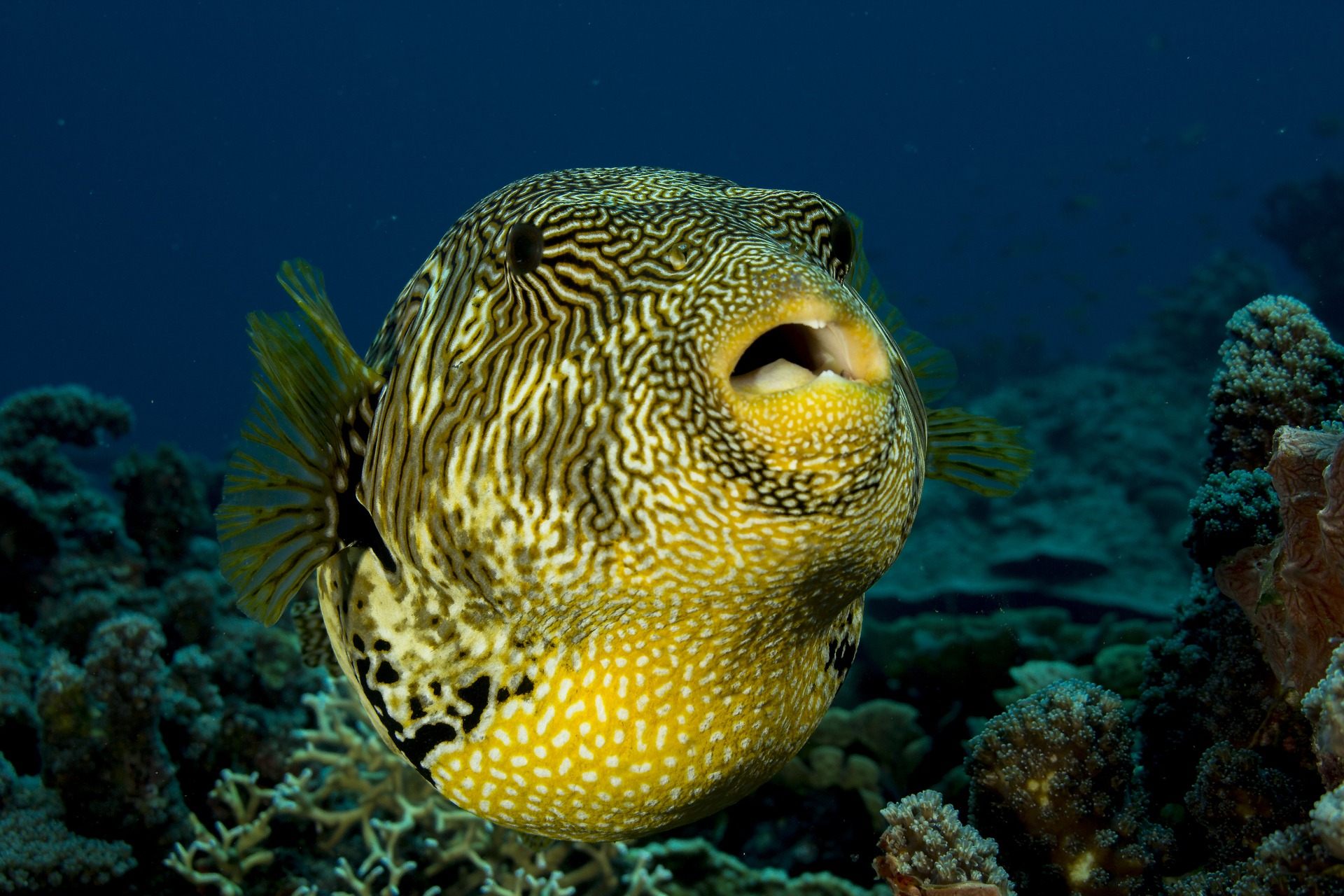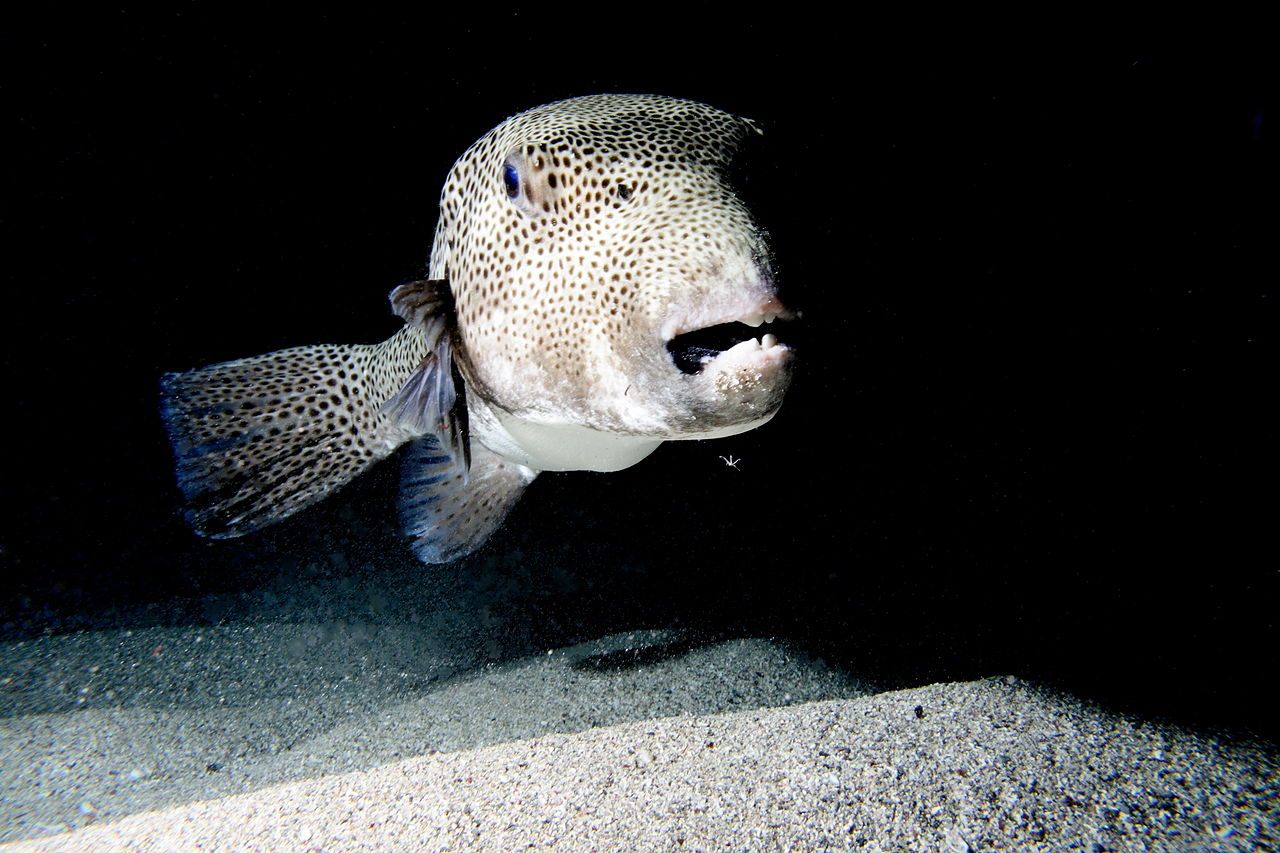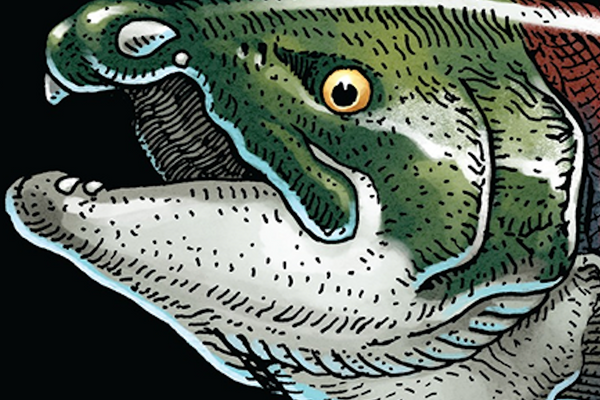Pufferfish and Human Teeth Come From the Same Genetic Code
The beaked ocean-dwellers might someday help us restore lost teeth.

Pufferfish are best known for turning into balloons when threatened—and for being a potentially poisonous delicacy. But there are plenty of other quirks to them. They can move their eyes independent of one another and some species can change colors. Their four teeth form a strong beak that allows them to pop open clams and mussels or scrape algae off rocks. According to a new study from the University of Sheffield and the University of Tokyo, we share some common but interesting genes with these bizarre fish. Some of the genetic code that allows pufferfish to keep growing their four teeth, as they grind down through use, is the same genetic code responsible for the regeneration of human teeth.
“We’ve discovered the stem cells responsible and the genes that govern this process of continuous regeneration,” said Gareth Fraser, a biologist and coauthor of the study, in a press release. “These are also involved in general vertebrate tooth regeneration, including in humans.”

Humans only regenerate their teeth once, and any teeth lost after that are gone forever. Pufferfish, on the other hand, constantly regenerate their teeth in layers that fuse to form their beaks. The frequency of regeneration and the number of teeth may be different, but the underlying stem cell process is identical. Fraser pointed out that understanding how pufferfish dental stem cells work could “provide clues to how we can address questions of tooth loss in humans.” We won’t be growing clam-openers, but this research might help restore smiles someday.


















Follow us on Twitter to get the latest on the world's hidden wonders.
Like us on Facebook to get the latest on the world's hidden wonders.
Follow us on Twitter Like us on Facebook